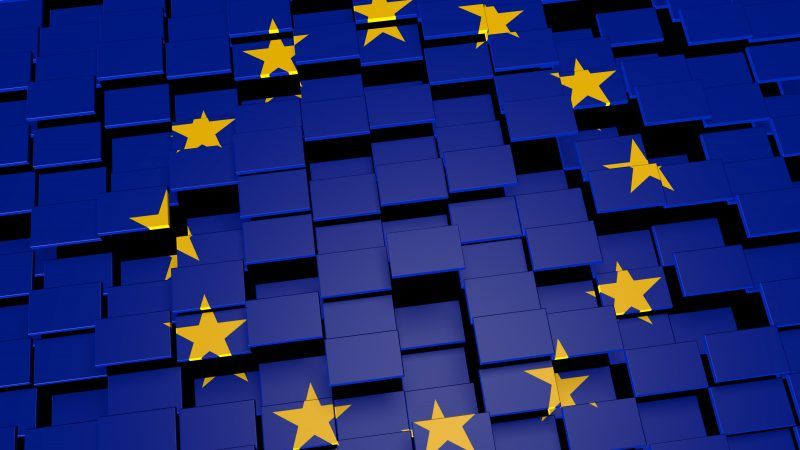The economic crisis provoked by the Covid-19 pandemic has highlighted the important role that European RDAs can play in delivering the objectives of cohesion policy, assuring the efficient absorption of the EU funds, and facilitating a faster recovery of EU regions. With the programming period 2014-2020 at the end of its life cycle, post-2020 cohesion policy will continue to receive significant financial support from the European Union. As showed in figure 1, almost €1.1 trillion of the EU budget will be allocated for cohesion policy 2021-2027, of which €721.9 billion coming from NextGenerationEU, the temporary recovery instrument to drive the recovery of Europe
On the 8th of December 2020, the European Parliament and the Council reached a political agreement on the Commission’s proposal for post-2020 on the European Regional Development Fund (ERDF) and the Cohesion Fund (CF), the main tools to deliver cohesion policy. With a budget of close to €234 billion, the ERDF and the CF regulation will support, in particular, investments in innovation and entrepreneurship, the digital and green transition, and transport networks. The main elements of compromise include:
areas of investment of the ERDF to contribute to a smarter, greener, more connected, and more social Europe that is closer to its citizens;
thematic concentration of the funds on European priorities for a green (30% minimum for all), digital and innovative EU;
scope of support to guide investment on the ground;
enhanced focus on territories with development challenges, such as rural areas, areas in demographic decline or with natural handicaps;
dedicated resources for sustainable urban development (8% of the ERDF allocation);
European Urban Initiative – a new tool for streamlining existing support streams made available by the Commission to cities and towns (knowledge, capacity building and innovation);
Interregional Innovative Investment – a new initiative that will bring regions working together to develop excellence in research and innovation;
scope of support of the specific additional financial allocation addressing the needs of the outermost regions.
Figure 2 shows the allocations of resources for the different programmes launched under NextGenerationEU. Specifically, REACT-EU and the Just Transition Fund (JTF) are strictly interconnected with cohesion policy.
REACT-EU (Recovery Assistance for Cohesion and the Territories of Europe) continues and extends the crisis response and repair measures already implemented by CRII and CRII+ during the first phase of the pandemic, while enlarging their scope to cover green, digital, and growth-enhancing investments. REACT-EU will deliver €47.5 billion of additional funds that will be made available to the ERDF, the ESF, and the European Fund for Aid to the Most Deprived (FEAD) for the current programming period 2014-2020. These additional funds will be allocated in 2020-2022 to boost investments and to support job maintenance. In particular, a political agreement between the European Parliament and the Council has been found on REACT-EU last November 18, 2020. The main elements agreed upon include:
Total flexibility for Member States to decide the share of the resources for the ERDF, the ESF, and the FEAD;
No pre-determined breakdown by category of regions to direct the resources to where they are most needed;
The possibility of EU co-financing of investments up to 100%;
The retroactive eligibility of expenditure from 1 February 2020, in continuity with the CRII and CRII+;
The end date for the eligibility of expenditure on 31 December 2023, in line with the 2014-2020 legislative framework;
The possibility to allocate resources also to existing cross-border cooperation programmes under the European Territorial Cooperation goal;
The allocation of 70% of the national envelopes in 2021 based on the socio-economic effects of the crisis, including the level of youth unemployment and the relative prosperity of Member States, with the remaining 30% for 2022 being calculated at the end of 2021 on the basis the latest statistical data;
Exceptionally no breakdown by category of regions. Member States need to ensure a balanced support between the needs of the areas most affected by the impact of the COVID 19 pandemic and the need to maintain focus on less developed regions.
Finally, in order to allow for a smooth and quick mobilisation of investments, ex-ante conditionalities, thematic concentration requirements and performance framework do not apply to REACT-EU. The Commission will do its utmost to approve programmes and programme amendments within 15 working days after submission.
Finally, on the 11th of December 2020, the European Parliament and the Council reached a political agreement on the Commission's proposal for the Just Transition Fund (JTF). The Just Transition Fund is a new instrument with an overall budget of €17.5 billion, of which €7.5 billion are coming from the Multiannual Financial Framework (MFF) and €10 billion from the NextGenerationEU. The JTF is a key element of the European Green Deal and the first pillar of the Just Transition Mechanism (JTM). It aims to alleviate the social and economic costs resulting from the transition towards a climate-neutral economy, through a wide range of activities directed mainly at diversifying the economic activity and helping people adapt in a changing labour market.
With the JTF, all instruments related to cohesion policy have now been agreed and are pending the final approval of the legal texts by the European Parliament Plenary and the Council. The next final step will be the legal adoption of the MFF Regulation and the NextGenerationEU regulation, which is foreseen for the first quarter of 2021. Once adopted, the European RDAs can rely upon significant ordinary and extraordinary funds to implement efficient strategies to boost the local economic development and competitiveness, playing an important role to support a swift economic recovery of the EU regions.
